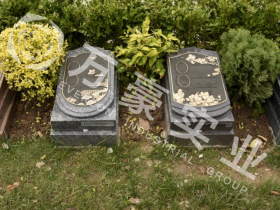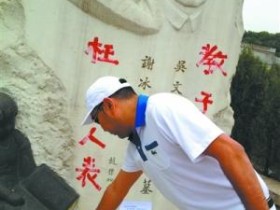- A+
“丧”是指哀悼伤员的礼仪,“葬”是指对伤员尸体的处理方式。 中国唐代的丧葬制度包括丧葬制度和丧葬制度,丧葬制度又可以分为丧葬制度和丧葬制度。 无论是丧葬制度、丧葬制度,还是丧服制度,都有两个明显的特点:层次清晰、形式雕琢。 这种丧葬制度与宗法制度密切相关,很多是由国家法典规定的,也有很多已经在民间流传下来,反映了宗法社会人们的伦理思想和宗教观念,它是唐代文化的重要组成部分。
一、推广殡葬制度
1、先秦时期
穴居人已经有了埋葬伤员的做法。 他们将白色的赤铁矿粉末撒在伤员周围,并用石器和装饰品埋葬他们。 很久以前,人们就有了灵魂的概念,同时又希望灵魂永远不死。 殷商时期,这一观念日益丰富和强化。 当时的人们认为,灵魂来自天,属阳,掌管人的精神感知; 灵魂相合的人会活,灵魂分离的人会死。 两者分离后,灵魂升天,灵魂入地,最后回归天地之灵。 灵魂入天后化为神,入地后腐化为水,被吸入底层泥土。 灵魂有保护后代的作用。 这就是自夏代以来中国人喜欢厚葬的原因。
穴居人葬礼
丧葬制度是一种强调地位的制度。 贵族与下层之间存在着巨大的差异:首先,汉代墓葬的规模不同。 贵族墓葬面积少则几十平方米,多则上千平方米; 而平民坟墓的面积通常只有几平方米。 二是墓葬等级不同。 除了贵族用来存放遗体的棺材外,棺材上还盖着木棺材。 棺材上雕刻着精美的图案,并涂有多层漆。
殷商社会生活
但民窑址有棺材无外椁,甚至连椁都没有,遗骸只埋在墓室里。 三是贵族墓葬中有人埋葬,少则三五人,多则几十人甚至上百人,而民窑址则无人埋葬。 第四,贵族墓葬中随葬品数量多、品位高,不仅有陶器、瓷器,还有青铜器、鼎,而平民随葬品只有瓷器或一些日用石铲。 、蛤镰等物品。 地位较低的奴隶则“优厚报酬,埋葬野地”。 他们死后,被遗弃在山沟里,遗体被野兽撕碎。
殷商古墓
由于殷人尊崇神鬼,西周时期极力提倡厚葬。 随葬品不仅丰富,而且越来越精美、豪华。 从劳动工具到生活用品,从珍贵的祭器到钢琴,一应俱全。
西周时期的婚丧嫁娶礼仪已基本定型。 在丧葬方面,坟墓按照同一家族有计划地排列,形成家族墓葬,家族墓地相对固定。 丧葬制度和丧葬习俗比较一致。 丧葬文化中规定的各种习俗,如墓地风水的选择、守丧期间的各种禁忌、祭品和鬼纸的布置差异等,在汉代已经成熟。 ,并逐渐产生了特定的丧葬文化心理,这也对后世的丧葬制度形成了深刻的影响。
宝鸡周墓
春秋时期,一些丧葬官署也做了相应的补充。 此时的丧葬制度,根据伤者生前的状况,决定陪葬品的有无和数量。 国葬的日期有明确的规定:“皇帝以七日、七月下葬;诸侯以五日、五月下葬;五制”。)。
战国时期,铁器成为丧葬礼仪中的重要陪葬品。 另外,人们很少作为陪葬品,而改用木俑、陶俑,这也是社会进步的体现。
2.秦汉时期
秦陵具有秦人雄伟、宏伟的特点。 高大的房屋、华丽的寝殿、坚固的墓葬、丰富的祭祀墓葬是定陵的重要特色,也是后来帝王陵墓的“模范陵墓”。
始皇陵
秦代的丧葬习俗对汉代的丧葬习俗有着极其重要的影响。 当时生产力水平大大提高,也具备了厚葬的条件。 “死如生”观念的流行,导致厚葬风潮在社会上迅速蔓延。
“如今老百姓死的制度是一种奢侈,生者没有储藏石头的地方,但所有的财力都在墓地里。弗拉没有渣滓,监狱与一个结合在一起。” (《后汉书·明帝记》。)“或以金刻玉盒,(木需)楩(木丹),多埋宝藏,傀儡车马,结成大丘,广植松柏,屋舍祠堂,崇尚奢华。” 为了陵墓,他不惜倾家荡产,致使古墓的奢华程度令人叹为观止。
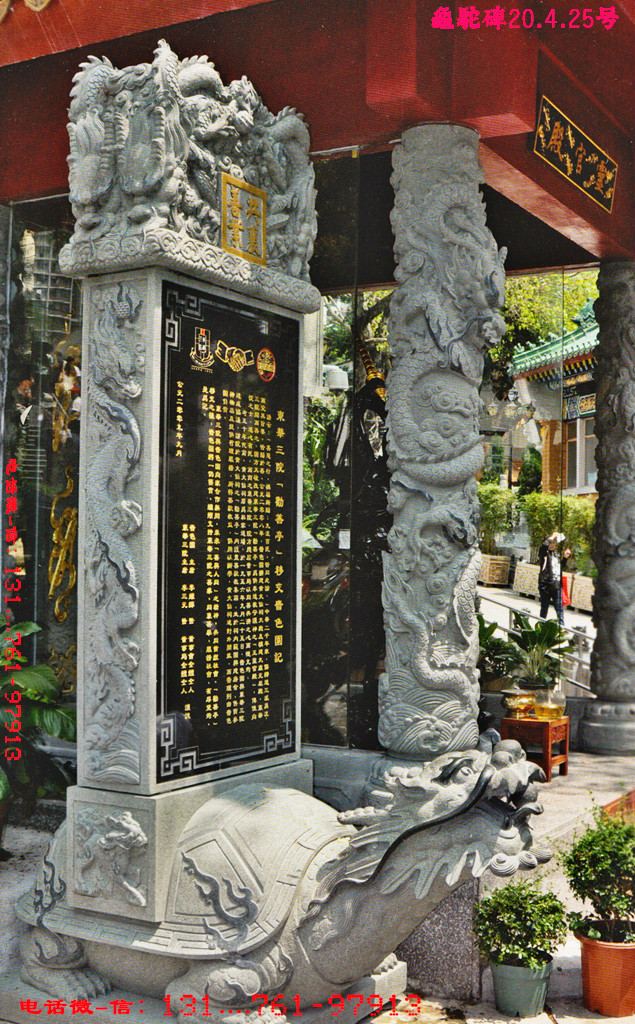
汉墓复原图
汉代陵墓的特点是,富贵人家埋葬尸体后,不仅要筑一个大土堆,还要在土堆后面立一块石碑,上面刻着死者的身份、官职和生平。墓碑上刻着主人的名字。 同时规划修建墓地,在墓中央竖立石像、植物雕像,象征主人的财富和力量。 墓地还会在坟上建一座祠堂,供生者饮酒祭祀。 地下墓穴更是精美绝伦。 为了让伤者能够继续享受幸福的生活,墓内仿造了一个四合院庭院。 庭院的大小、陪葬品的多少,也是当时富人之间比较的对象。
双墩一号遗址
汉代的陪葬品不仅是传统的器物,墓葬中还埋藏着金银和艺术品。 这时,开始使用钻石建造汉墓。 富裕人家多用砖砌坟墓作为外棺,仍用木质外棺盖棺材,使棺材更加坚固耐用。 西汉中期,夫妻合葬,多采用异地合葬的新习俗。 为了解决两人生卒日期不同的矛盾,礼俗中出现了“措”的概念。 住屋者,立之,停棺下葬。 先将伤员放在棺材两侧,然后将伤员合葬。 这一习俗传承了数千年,民间至今仍有“错葬”之意。
汉墓随葬品——马踏飞燕
汉代墓葬多采用石、砖、砖石三种建筑材料混合建造,石砖上还刻有绘画。 早期遗址多以建筑为题材,画像多刻画在墓门、正室门上。 主柱和门扇上,将现实生活中的建筑刻入画面,象征阴间的居所。 汉武帝以后,唯儒为尊,儒家的“三纲”、“五恒”的伦理道德观念也影响了汉画的内容。 汉墓中也出现了歌颂智慧、勇敢、忠孝的肖像。 例如,长城雕塑、肖像石墓出土的历史故事肖像画约占肖像画总数的20%。
从东汉开始,墓葬中开始出现白虎、青龙等神话人物或神的肖像,具有驱邪、长生的目的。 还有反映墓主生前骑射、出行、舞蹈、宴饮等生活状况的图画,这些图画往往布置在墓室前室周围和正室两侧。 。 墓门上刻有题环,并绘有红色吉祥鸟,象征死后吉祥。 古墓盖顶部刻有日轮和满月,太阳中刻有三足乌鸦,月亮中央刻有蟾蜍,日月周围有密密麻麻的星辰,还刻有长虹等天象图、二十八府星象图。 它象征着一种社会人员。 墓中伏羲、女娲的画像体现了对繁衍的崇敬,希望她们能够在人间繁衍生息。
石雕八宝麒麟瑞兽墓碑雕刻人物浮雕
汉代古墓葬随葬品种类和数量较多,大致可分为金属器和漆器。 金属器有:铲子、剑、铃铛、带钩、钱币、弓帽、鎏金铜钉帽、兽面饰物等。陶器主要有:鼎、壶、墩、瓮、嫁妆、仓、俑、盘等。很快。
墓前植柏,自秦汉以来就有习俗。 《太平玉兰》引《风俗》云:“墓上有柏树,路上有石虎”。 “明经”亦称“棺材”,后称“幡”,是招魂的象征。 《礼记·檀弓》云:“明,明镜也。 伤者不可辨,故以其旗所认。” 郑玄注:“明镜”是“神旗”,这里的“神”指的是伤者的灵魂。
汉武帝曾继承秦朝统治,阴阳五行,炼丹术在众生中极其盛行。 尊鬼侍神,立功立业,通过神鬼的悟道求得长生不老。 因此,在汉初,他们在国家重大决策之前,经常向巫师询问星象。 不可或缺的环节。 还有许多供奉鬼神的寺庙。 文帝时期,“大街小巷有巫,村里有福”(《盐铁论三所》)。 鬼神观念深入人心。 鬼神崇拜与祭祀紧密凝聚,死如生。 这也是唐代墓葬奢华的另一个原因。
汉武帝雕像
武帝时期,董仲舒“罢黜百家,独尊儒术”。 儒家思想与以前的神权政治并驾齐驱。 在随后几年的发展中,儒家思想给丧葬礼仪带来了特有的繁琐。
3、魏晋至清末
魏晋以后,佛教深入人心。 佛教的灵魂永生、轮回、因果报应等观念很快被人们接受。 另外,佛教在东汉中期开始盛行。 佛教僧侣、道教方士积极参与民间祭祀活动。 儒释道三教经过多年在意识形态领域的斗争渗透,互为主体,并逐渐趋同。
从三教对人们丧葬意识的影响来看,儒教由于其特殊的政治背景,在人们的行为意识中起着主导作用,而道教、佛教只起辅助作用。 厚葬的风格和儒家两千多年来产生的伦理道德规范,使人们在丧礼上只有祭祀数量的差异,而没有厚葬观念的差异。 从权贵到平民百姓,对于丧葬问题的看法都是一致的。 厚葬在一定程度上成为封建社会某种意义上人们生活、处世的尺度。
南北朝时期,中原炮火不断,经济萧条,集体丧葬之风有所消退。
统治者带头。 曹操在《遗令》中说:“天下尚不安定,不可效古人。下葬后,一切戎服皆除,驻徐者不准。”离开本部,有师有师。时之衣,无金玉之宝。” (《三国志·武帝纪》。)
曹操墓
魏晋时期的战争客观上阻止了厚葬的蔓延。 魏晋时期,民间提倡新的丧葬习俗:在墓内立墓志铭,在墓前立碑,在墓门口放置陶兽,俗称墓镇兽。 猛兽或蹲或卧,面目狰狞,张牙舞爪,令人心惊胆战。 墓主希望利用镇墓兽来吓退那些入侵墓地的人。
隋唐时期丧葬的最大区别是墓葬中彩陶的摆放,墓壁上绘有青龙白虎,墓顶上绘有日月。和星星。 宋元窑址多采用砖砌仿木结构墓葬,盛行烧火纸葬俗。 木偶和明器皿都是用纸制成的,在葬礼途中焚烧或堆放在坟堆上。
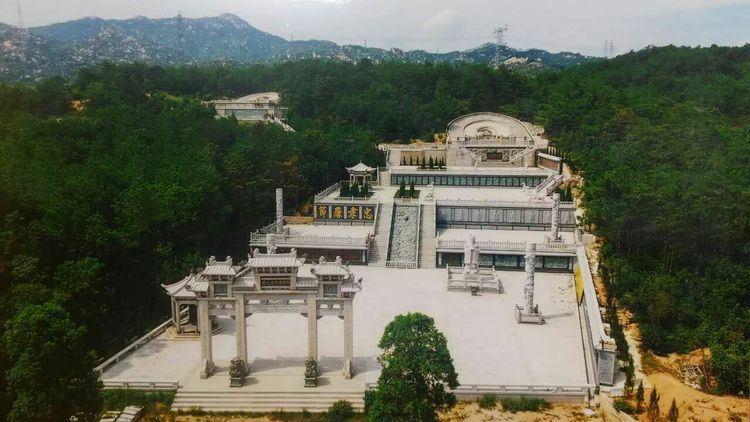
唐镇墓兽
从明朝开始,西方传教士将西方文化传入中国,出现了反对儒家、强调个体解放的社会思潮。 人们对金钱和享乐表现出前所未有的热情,世风直爽、奢靡。 这个世界只想现在快乐,而不关心背后的一切。 因此,墓葬的内容变得更加简单,更多的随葬品被象征性的物品所取代。 但贵族的坟墓还是相当豪华的。 明代的薄葬并不是说不愿意花钱,而是不愿意把钱埋在地里。 王公贵族、富人们在申请丧事时,总是想方设法举办大型宴会,感谢土地。 僧礼拜,讽经破狱,致之日,神灵充道,以享荣华”(《古今图书集》)。
明清以后,经过多次变迁和演变,丧葬习俗的改革不仅是传统丧葬的症结所在,也体现了时代的进步和人们思想认识的提高。 但葬礼的信仰和观念很难改变,所以丧葬礼仪仍然是恭敬的。
2.中国唐代的丧葬制度
一、墓室尺寸
在封建社会,墓葬是有等级的。 等级越高,墓地越大,坟墓越高。 郑玄提到“汉法曰烈侯墓高四尺,关内侯与庶人有别”。
隋唐以来,对于不同地位的人,墓地的大小都有严格的规定。 诸侯100方,一品90方,二品80方,三品70方,四品60方,五品50方,六品以下20方,普通人10平方台阶。
坟高:诸侯二十尺,一品十八尺,二品十六尺,三品十四尺,四品十二尺,五品九尺,七品七尺。六品,七品以下六尺,平民四尺。
2.墓碑和牌位
《说文》将碑上的文字定义为“立石”。 先秦时期提到的碑石,都是指这种长立石。 下葬时,在墓地的四个角或两侧立碑。 纪念碑下端钻有圆孔,称为穿孔。 以穿孔为支点,控制平衡,石棺随着缆绳缓缓下降。 这种用来下棺的碑是用木头或石头制成的。 棺木被装入墓地后神道碑是什么,石碑也被迅速埋入墓室。
武则天无字碑
从西汉末年开始,有人在墓前立石碑,既不埋入墓中,也不埋葬后移走,在墓碑上刻上墓主节度使的名字,成为石碑。 早期石碑下部仍留有穿孔,顶部或呈方形,称“贵首”,或呈弧形,刻云纹,称“哈乐首”。
东汉时期,墓前立碑之风盛行。 许多石碑上除了刻有墓主节度使的名字外,还刻有介绍和赞扬墓主家庭生活和事迹的短文。
唐宋时期,允许在一定级别的高官墓前立碑。 碑的头部称为额头,刻有螭、虎、龙、雀等图案。 当时规定,五品以上的石碑称为赤手桂符,高度不得超过九尺。
上官婉儿墓志铭
明清时期,石碑的规定更加详细:一品为螭头龟,二品为麒头龟,三品为天禄、辟邪头龟,三品为螭头龟。第四至七阶为圆头方趺,圆头碑又称碑。 碑身、碑头、座高的高、宽均等比例。 碑的最高品级通常高达1丈6尺。 原则上,普通人的坟墓前是不允许立碑的,但这些限制并没有严格执行,所以大多数墓碑都是在普通人死后立在坟墓前的,但规模较小。大小且没有座位。
三、相关制度
A. 神道纪念碑系统
立于神道上的石碑称为碑。 皇帝、贵族和一些中层官僚的坟墓前有垂直的通道,称为神道。
后人记载和赞扬墓主人的家庭出身和人生故事神道碑是什么,大多刻在碑文上。 墓前立的石碑一般只刻官名、姓氏、禁忌等内容。 《清通历》规定:“某官石碑上写某某官墓,某某家族写女子”。 八、九品及以下及将军铭文曰“某官之墓,无官则写将军”。 某女子墓中,该女子称为凤家,若无封印,则称为某家。”
B、石雕团体系统
墓前神道两侧排列的人类、动物和传说中的神兽雕像,也是用来表明其地位的,称为石象升。 “所以手表上饰有古老的脊线,就像一生的仪式和守护者一样。”
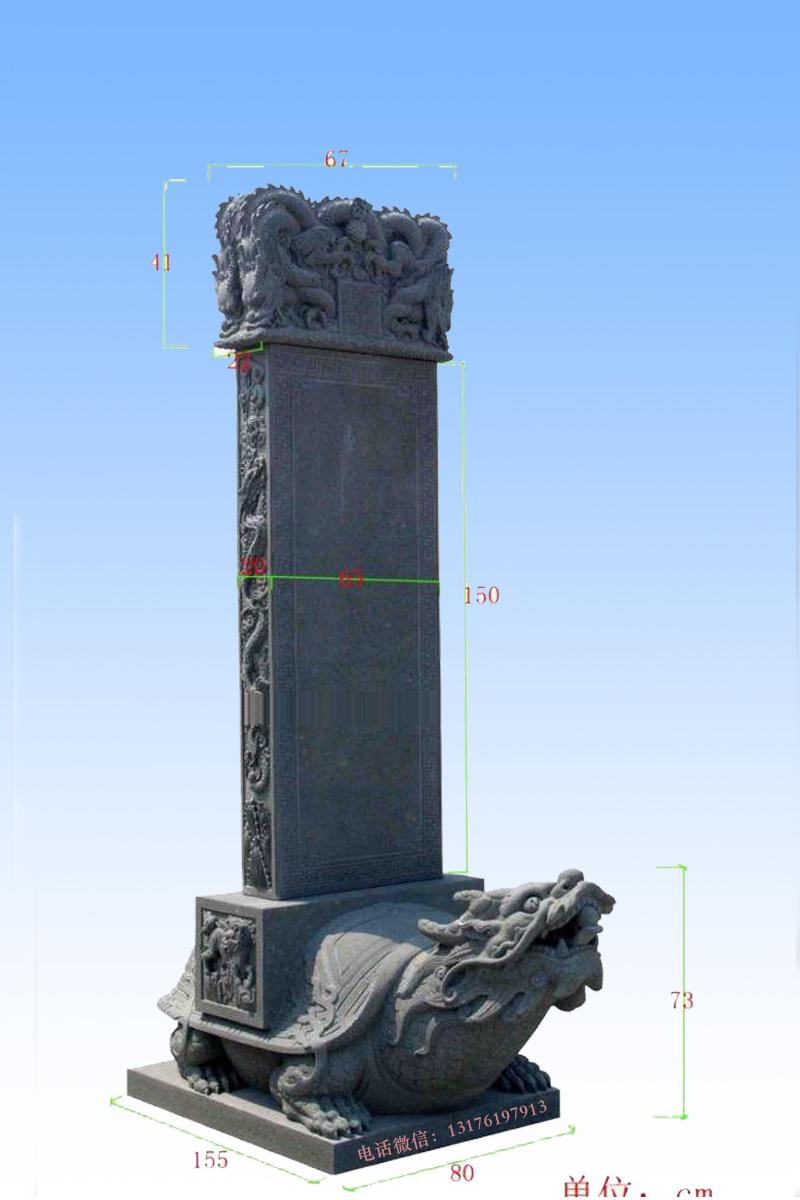
明长陵神道
墓前的这种雕塑群最早出现于东汉时期。 汉武帝名将霍去病墓前的雕塑至今仍存。 除了常见的植物雕像外,还有抱熊的武士、骑着匈奴的马等造型。
东汉贵族官僚墓前排列的石兽,不仅大小不一,而且种类也各不相同。 墓前的石人,原本是作为墓主的看守之用。 公元二世纪中叶,乐安太守姬昌墓前的两尊石人臂上刻有“旧汉怀远太守杞郡相”等字样。分别为“夫门之卒”。 东汉时,一级太守瓮城南门由县令、侍卫把守。 这种石人后来有了一个专有的名字叫“翁忠”,象征着墓主生前的守护者。 各种石兽被称为“石像”,体现了墓主人的高贵身份。
唐代的制度是:三品以上高官墓前可放置石人二人、石羊二人、石虎二人,成对排列; 四品、五品的高级官员只能放置两个石人、两只石羊,六品以下的则不能放置。 宋代,三级及以上可放置2个石人、2个石羊、2个石虎、2个石望柱,四、五级可放置2个石羊、2个石虎、2个石望柱。年级。
翁忠雕塑
明清两代规定,二级以上应放置石人、石马、石羊、石虎、石旺柱各两件; 三级应放两只石虎、两只石羊、两只石马、两只石望柱。 四品应放石虎、石马、石王柱两只。 每 2 件; 五品石羊2只,石马2只,石望柱2只。
至于帝王陵墓,神道石雕群鳞次栉比,名目繁多,宏伟精美,是大臣们无法比拟的。 如高宗与武则天合葬的定陵(今陕西省干县北部),有飞马1对、朱雀1对、利马5对(原来都有骑手)、10对。成对的战士和狮子。 少数民族领袖雕像1对61尊。 明成祖永陵(今北京延庆)的神道长达800多米,有狮子四只、獬豸(獬豸传说中的一种独角兽)、骆驼、大象、独角兽各四只,以及两边的马匹。 蹲着,面对面,有中将、文官、勋辰各2对,共32件。
C. 石表柱系统
石王柱是由作为墓地标志的墓柱演变而来。 起初,它有两个功能。 一是为了方便墓主的后人找到,二是为了让墓主在灵魂归来时更容易辨认安息之地。 华表也是一种具有象征意义的柱状建筑,上端有笔架。 最初是木头做的,后来改用石头做的。 唐宋以后,墓前立的石表柱、石华表上常刻有花纹,与石人、石兽相结合,有表示等级、炫耀身份的意义。
D.墓志铭和墓碑系统
除礼器外,专门用于陪葬的物品还有铭文、墓葬(bié)等。
墓志铭的性质与碑文相似。 都是记载伤者姓名、家庭、生平和事迹的碑文,文末常有称为“明”的押韵悼词。 期盼读书,而神道碑则埋于墓中。 墓志铭起源于汉代,魏晋以后盛行。 早期的碑文类似石碑,但较小。 南北朝后期以来,一般呈圆形,由枝盖和枝石组合而成。 纸盖多制成柱形(如顶扣小盒),一侧刻隶书题名。 志像像志文、志明。 唐代以后,还署有作者、作家的名字。 历代出土的碑刻中,不少是著名艺术家所书写的,不仅具有很高的历史价值,而且是绘画艺术的瑰宝。
墓志铭
坟墓又称地券、地券。 至前是受伤者带到阴间的仿祖产的物品,意味着墓地及其周边地区已被伤者买下,其他鬼魂不得侵犯其所有权。 虽然鬼界的这种契约是迷信的产物,但它反映了现实世界土地私有制的发展和农地交易的兴起。 最早的墓葬出现在西汉时期,墓葬材质有铅、玉、陶等。 后世多用钻石或木板。
4、丧葬形式
1、崖葬
将人的尸体埋在山洞或悬崖上的丧葬习俗是风葬的一种,即露天埋葬。 。 其中最著名的是江西龙虎山的石棺崖葬,它是古越文化的遗存,也是现存最完整的崖葬。 我国早在唐代就在濮、越、巴、辽、汉等部分民族中出现了崖葬习俗。 《临海土志》已有崖葬的记载。
僰人悬棺
我国崖葬主要分布在:福建、浙江、江西、贵州、广西山区的仙霞山、武夷山、西江流域、湘黔滇交界的无锡河流域,如游、陈、吴、吴、袁. 四川东南部汉江及其两岸,四川、云南乌蒙山北麓至金沙海滨,以及台湾岛屿。 崖葬大致可分为四种类型:崖洞葬,随葬器物安放在天然的悬崖洞穴内; 悬崖墩葬,将陪葬器具放置在悬崖垫石的缝隙中; 称为崖洞葬; 在悬崖上打孔钉木桩,放置陪葬器具,称为埋葬。 盘点中国唐代八种主要丧葬形式,解读古人石棺葬的生死观。 崖葬的埋葬制度分为一次埋葬和二次埋葬两种类型。
2、水葬
新中国成立前,我国一些哈萨克族、门巴族就实行这种丧葬方式。 水葬有固定地点,多在河流急流处。 After a person dies, please recite the Buddha's name, and the person responsible for the water burial or close relatives will bind the body with bent limbs, carry it to the water burial ground, and tie a huge stone on its belly to sink into the water. The clothes worn by the deceased during his lifetime belong to the person who was buried in water, and half of the rest of the property is handed over to the local feudal government and half to the temple. Many people went into debt, and some families even went bankrupt because of the cost of funerals.
water burial
3. Cremation
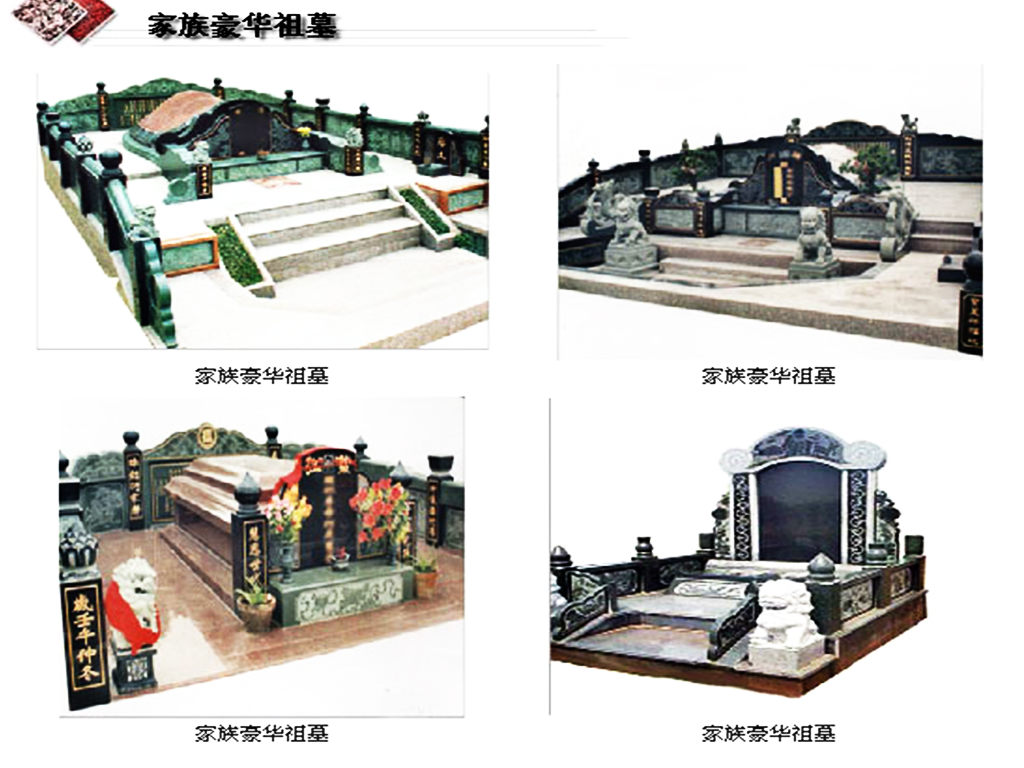
As early as the Spring and Autumn Period and the Warring States Period in China, the Diqiang people were buried in the ground. The seventh volume of "Taiping Yulan" quoted "Zhuangzi" and said: "When the Qiang people died, they were burnt and their ashes were scattered." The Tibetans in the area north of Maowen, Sichuan are still buried. The Tibetan, Naxi, Lahu, Hani, Pumi, Nu and other ethnic groups that are related to the ancient Qiang people have also been cremated in history, and this custom is still maintained in some areas. In Lhasa, the Living Buddha, the upper class and the tribal leaders are buried after death. The ceremonies and methods of cremation vary from nation to region.
火葬
When the Liangshan people in Sichuan and Yunnan were cremated, the ashes of the murdered were debated, and the ashes of those who died normally were covered with soil. When the Lahu people are cremated, the injured and their production and living utensils used during their lifetime are cremated together. The Pumi people first put the body into a square coffin and carry it to the crematorium, split it open with an axe, put the body into a "firewood room" with milk and ghee and cremate it, and then collect the ashes and send them to the columbarium in the mountains.
Under the new funeral situation, most areas of the country adopt burial.
4. Tower burial
This is a technique used by Taoist living Buddhas and monks to dispose of dead bodies. It originated from the primitive Buddhist custom of placing Buddha's relics or Buddha's claws in pagodas. There are three methods of tower burial. One is to bury cremated ashes in the tower courtyard, which is the most common method; The third is to place the antibiotic-treated whole body and the wounded's tools in the "tower bottle".
tower burial
In Lhasa, after the death of a Living Buddha or a bhikkhuni, the intestines are rinsed with mercury and "salad" spice water, and then rinsed twice with sulfur water and schisandra water respectively, and then the skin of the body is rubbed with sandalwood water, sulfur and rhodiola. , and finally wrapped with silk, put on cassock, and placed in the "tower bottle". It is believed that with this method, the corpse will not rot for a long time, and the skin will be as thick as life.
5. Burial
This is a kind of burial generally adopted by various nations in the world. This kind of burial is a manifestation of human beings having primitive religious concepts. In a burial tomb, one body is usually buried, but several people or clan (family) members are also buried together. During the primitive commune period, the clans had fixed tombs. Families (clans) in slave society and feudal society usually have fixed cemeteries. Burials usually have coffins and sacrificial objects of different qualities, and the mausoleums of the ruling class are rich in sacrificial objects, and some are even buried with human beings. In the earliest burials, the wounded were placed on the surface inside and outside the caves where humans lived, and then they were buried with earth and rocks or dug a shallow pit. With the development of society, burial has evolved into various forms.
葬礼
6. Tree burial
Also known as "wind burial". Some build bird's nests with leaves on branches or put wooden pillars on several branches, and put the wounded on them; some build shack-like huts on trees, and put the wounded inside; Or hung or tied to a tree. These burial customs once existed in Northeast and Southwest China. "Book of Wei? Lost Wei Biography", "Northern History? Biography of Khitan", "Longsha Jilue" and other historical materials have recorded this. After the founding of the People's Republic of China, various forms of sea burials can still be seen in some minority areas.
树葬
When the hunters of the Hezhen nationality died while hunting, they took branches on the spot to make a round wooden coffin, put wooden pillars on the branches of four small trees in a circular position, spread the roots on top, and put the wooden coffin of the injured on it. The Lhoba people in Tibet built simple tree houses on trees with roots, bamboo, and banana leaves as places for the wounded to rest. The Oroqen people used to place the coffins of the injured on tree roots about 2 meters above the ground. Regarding the formation of sea burial customs, some think it is related to the hunting economy; some think it is a reflection of ancient human "nest-dwelling" life in burial customs. Based on the concept of immortality of the soul, they believe that since people lived in In the tree, after death, one must also live in the tree in another world.
7. Boat coffin burial
The burial customs of some ethnic minorities in the Tang Dynasty in northern China. Because the boat-shaped coffin is used as the burial utensil, it is named. There are two types of boat coffin burial: open-air burial and underground burial. Open-air burial in boat coffins is popular in the southeast where the ancient Yue people lived, mainly in the Wuyi Mountains of Guangdong and Fujian. The boat coffins in Mount Wuyi, Chong'an, Fujian Province, are in the shape of canoes, known in history as "Jiagu boat coffins", "immortal boats" and "boat boats". In recent years, archaeologists have discovered that this kind of boat coffin is divided into two parts, the bottom cover, both of which are carved from a single piece of wood, and the upper and lower parts fit together.
Excavation of Ship Coffin Burials in Spring and Autumn Period in Sichuan
The bottom is the main body of the boat coffin, and the middle is a rectangular corpse holding place; the cover is semicircular, and the inside is hollow like a boat. According to literature records, there are similar boat coffin burials in central and southern China: Hubei is called "the boat", Hunan is called "the boat", and Guangxi is called "the incense boat" and "the fairy boat". Boat coffin burial was a burial custom of the Ba nationality in the Tang Dynasty in Zhejiang, which was popular from the end of the 4th century BC to the end of the 1st century BC. According to archaeological discoveries, there are ship coffin ancient tombs in Lettuba, Ba County, Sichuan Province, and Baolun Court, Zhaohua County. There is a wooden board as a cover.
5. Traditional Folk Funerals
Many places in China today still have traditional funeral rites. These rites are also part of Chinese culture and should be inherited.
1. Funeral
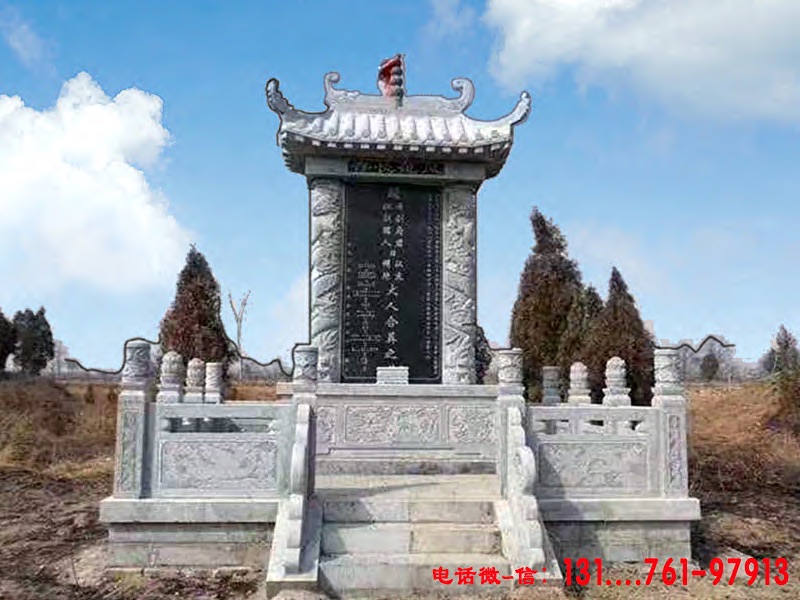
After the deceased died, he was carried to the bed in the main hall with his head facing east, then he took off his bra and put on new clothes. When dying, the wife and son cannot let go of the woman's hands and feet, nor can the husband and children hold the man's hand, otherwise it will be unlucky. When the patient is still breathing, put a new piece of cotton between the nostrils. When the cotton does not move, it means that the breath has been cut off. Then carry it to the prepared bed under the south window, cover it with a new quilt, and place it on the bed. Put pearls and jade into the mouth so that the mouth is not closed. Next, the summoning of souls begins. The person in charge of the summoning ceremony climbs to the top of the building, and while waving the wounded man's shroud, calls softly to the northern sky, which symbolizes the "Yujie": "XX, you go back!" A total of three long voices ( Men call their names, women call their names) to show that the spirit has returned to the shroud, and then cover the wounded head with the shroud to show that the spirit has returned to the wounded head.
葬礼
After the deceased had bathed, he began to mourn. The owner of the funeral home first sends condolences to relatives and friends, and when the guests come to worship, the dutiful sons have short hair and bare feet, mourn loudly, and beat their shoulders while walking to pick up the customers. The filial sons also made a "Ming Jing" for the wounded, wrote "XX's coffin", and then carved a god's seat with a wooden board, placed it in the atrium, symbolizing the dead of the wounded, and covered the Ming Jing on the shrine. Filial sons and filial daughters have to go to mourning, mourning according to their elders and children, and use a "mourning stick" to express that they cannot lie down without a stick due to excessive sorrow.
During the mourning period, women are forbidden to paint, smoke meat, and eat cold dishes and light rice to show their resentment.
The deceased held a small funeral the next day, that is, the shroud that the wounded wore into the coffin. The clothes are all knotted with bandages instead of buttons, to show that they are not ready to take off after they are put on. After the corpse is put on the shroud and moved to the corpse bed, the head is covered with silk, the two gaps are mended, the legs are tightly bound, and then the funeral quilt is covered and fastened with bandages. The dutiful sons stripped off their coats and let loose their hair with straw ropes, while the women left their hair undressed and removed their sash, all of them stomping their feet and weeping.
song dynasty funeral
After the small mortuary, the wounded are worshiped with wine and food, which is called a small burial ceremony. That night, the lights in the courtyard were brightly lit all night. On the third day, a funeral was held. Big funeral, also known as "funeral", is to put the body into the coffin. In the morning, the large burial quilt is displayed first, and then the coffin is carried into the hall, and the bedding is spread in the coffin. Set up a large mortuary bed, move the body to the large mortuary bed, cover it with a blanket, and then lift the body into the coffin. The dutiful sons sobbed and mourned, and then held a funeral ceremony.
After the funeral, we cry in the morning and evening, and offer food on the table in front of the coffin when eating. The dutiful sons and other relatives of the elders wear mourning clothes and stand beside the coffin to receive the deceased relatives and friends.
2. Funeral
Before the burial, fortune-tellers, divination people, and tomb people (the person in charge of the cemetery) select the burial date and Zhaoyu (the boundary of the tomb) through tortoise divination, and inform the guests of the burial date. The day before the burial, the coffin must be moved to the ancestral temple and parked. The filial sons bare their clothes and stamp their feet mournfully to hold a mourning ceremony.
葬礼
On the day of the burial, first hold the funeral ceremony, read out the ceremonies attached by all parties, and then carry the coffin out, and the funeral cloth will go in front of the hearse. pallbearers. The fierce "Fang Xiang" is used to drive ghosts to clear the way in front of the hearse, followed by Mingjing and Lingpai, and the hearse is carried (or pulled) by the husband closely behind. In front of the coffin are the owner of the mourning family, relatives, friends, and guests. They are arranged according to the order of the "five clothes", the cousin without clothes is next, and the guests are next, weeping all the way to the cemetery. Then, the husband put the coffin on the mat, and the Ming Jing covered the coffin, and the host, relatives and friends took their places, weeping unceasingly. After the coffin is lowered, I will pay homage to Jiying (kneel down and touch my forehead to the ground to show extreme sadness), and I will do my best to remember it.
3. mourning
When a filial son is mourning for his mother, he must stop swallowing for three days and live in a temporary hut next to the mourning hall. "Sleeping thatch pillow blocks", sleeping straw mats, and pillows are not mentioned unless it is a funeral; "practice" sacrifice (11 After 25 months, they can live in unpainted houses. After "Daxiang" (25 months), they can live in a tidied funeral palace. After 27 months, they can remove mourning clothes and sleep in dormitories. Daughters must observe mourning for their mothers, but why live in thatched huts and sleep on straw mats, and married sons go back to their natal homes for funerals. After the "practice" sacrifice, they can return to their husband's homes. A filial son must wear mourning for his mother.
丧
After the burial, a spiritual seat should be set up for the wounded, and a "Yu" ceremony (sacrifice for the soul) should be made. After the three Yu sacrifices, the ceremony of "death cry" (the last cry) will be performed, and food will be offered and mourned on the spiritual throne, so that there will be no need to cry again sooner or later. On the second day after the crying stopped, the ceremony of "Fu Fu Sacrifice" was held, and the new god master (wooden shrine) was welcomed into the ancestral hall, attached to the ancestral temple or the ancestral concubine, and accepted the ancestor worship together with the first ancestor. After the ceremony, the new God Lord was moved back to the original place. Thirteen months after the funeral is "Xiaoxiang", and people start eating apples after offering sacrifices to the spirit; 25 months is "Daxiang", when the new god is about to be moved to the ancestral hall; after 27 months, they can start drinking and eating meat.
Beginning in the Wei, Jin, Southern and Northern Dynasties, there were ceremonies of burning incense candles, paper houses, and cardboard boxes for the wounded in Yangjian, and later evolved into burning tin foil (representing money) and Ming coins (specially printed for paper money) and sending porcelain to the wounded customs.
burning paper money
China's funeral culture is a complex of various idiosyncratic cultures in human community activities. It includes beliefs, psychology, ethics, and morality. We can only understand Chinese people's concept of death, funeral customs, funeral culture, and sacrificial culture Only in this way can we better recall the ancestors and inspire those who come.
Reference material: Mei Xiangyang, "Funeral Management Issues and Thinking"
倪俭《传统殡葬礼俗差别研究》
王国虹《中国传统丧葬伦理思想》
- 我的微信
- 这是我的微信扫一扫
-

- 我的微信公众号
- 我的微信公众号扫一扫
-

